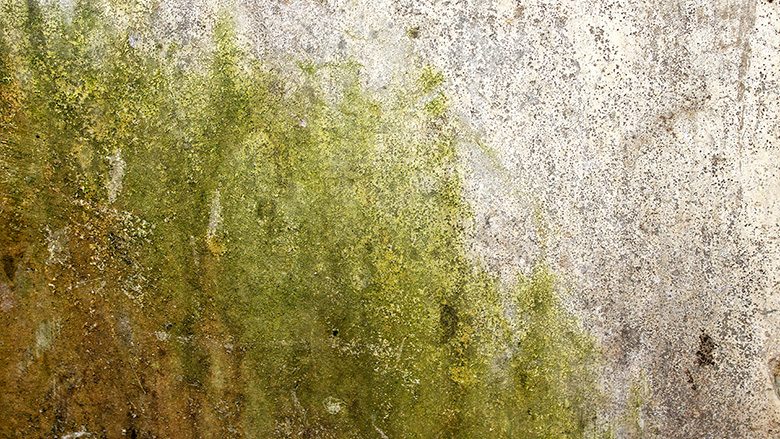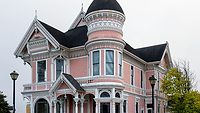5 Fundamentals of Surface Preparation Restoration Professionals Should Understand
Mastering Surface Preparation: A Guide for Restoration Professionals

Photo Credit: Engin Akyurt / Unsplash
Surface preparation is a cornerstone of any successful restoration project. Neglecting this crucial step causes adhesion problems and may affect the finish, reducing the longevity of any material.
Understanding workspace preparation fundamentals is vital for any professional who prides themselves on offering quality services.
Why Surface Preparation Matters
Thorough preparation ensures coating adhesion, creating a durable outcome and reducing the need for costly reworking.1 Experienced restorers know how to prioritize this crucial step to meet client expectations.
5 Fundamental Surface Treatment Steps
Regardless of the type of substrate, these basic steps provide quality assurance before applying any final coating. Tailor these steps to the project type and final coating requirements for optimal results.
1. Assess the Material
A comprehensive assessment of the area reveals what contaminants, cracks and compatibility apply to the project. Consider:
- Structural integrity: Coating damaged areas can compromise results. Address structural flaws to ensure optimal coating and product performance.
- Compatibility: Assess whether the surface type is suited to the desired final product. Porous materials require priming before painting.
2. Plan for Previous Coatings
The current treatments may interfere with new coatings. Determine whether these layers are removable or require cleaning to achieve a desirable outcome. Some removal methods to consider include:
- Abrasive blast cleaning: Compressed air or water is jetted onto the area, removing particles and old layers. The jet stream may also contain an abrasive material like sand or steel grit. This method is perfect for stripping oxide or rust. Adjusting grit size and blasting power accommodates various projects like plaster and brickwork.
- Manual and power tool cleaning: Using machines or tools like metal files and sanding blocks is often the only alternative in hard-to-reach places or where space is limited. Grinding machines use mechanical force to scarify the area with a cutting action.
- Heat stripping: Using a heat gun or a flame cleaner changes the surface temperature, causing the outer layers to crack and break free from the substrate. Heat is an effective way to prepare steel or cast-iron projects.
- Steam cleaning: A machine creates superheated air to remove biological contaminants like mold or mildew. When combined with gentle abrasion, steaming can clean aging materials like concrete, brickwork, glass and steel.
- Chemical treatment: Chemical treatments can help remove hardened synthetic contaminants like adhesives and hard-to-remove layers. Acids, alkaline solutions and solvents like degreasers can strip materials like paint, glue and other chemicals by dissolving the molecular bonds that keep the particles on the surface.
3. Remove Surface Contaminants
An area polluted with grease, oil or biological agents like mildew can cause coatings to slick away from the substrate. Prioritize cleaning and ensure the workspace is dry before applying treatments. Practical techniques include:
- Degreasing oily surfaces.
- Using mold or mildew removers to clean damp areas.
- Washing with water and a suitable detergent to strip dust and dirt.
4. Loosen Particulate Matter
Old spaces carry layers of particles, such as flaking paint, debris and crumbling plaster. Removing these coarse materials is key to achieving a workable area, but workers must wear protective gear such as a breathing apparatus to prevent dust inhalation. Use gadgets like:
- Scraping tools: Putty knives and trowels can manually strip old paint and residues.
- Wire brushes: Use steel wire brushes or heavy-duty brooms with stiff bristles to dislodge granules from brick and stone.
- Sanding blocks: Achieve a stable base by smoothing rough edges with a sanding tool.
5. Dry the Surface
Moisture presents an unseen threat to a coating when the substrate is still damp. A wet wall or frame with condensation may cause bubble formation, weakened adhesion and peeling.2 Confirm that a wall, whether old or newly cemented, is dry enough to treat.
Drying damp sections could take days or weeks — use dehumidifiers and fans to accelerate the process.
Scientifically test for dampness by:
- Pressing a hygrometer or moisture meter against the wall to gauge the water content.
- Taping a piece of clear plastic to the wall, ensuring no openings remain around the edges. After 24 hours, check for condensation.
Post-Cleaning Considerations
The final project cleaning is essential.
Safety
Some treatment methods produce harmful substances that must be removed before the area is safe to enter. You should seal treated areas to prevent environmental contamination and ensure worker safety. Blasting lead-based paint from walls will produce toxic lead dust, so all workers require adequate protective gear.3 The site needs an efficient cleanup to remove any particles during and after treatment.
Post-Treatment Cleaning
Chemical and abrasive treatments can affect the newly prepared surface. You should scrub or wipe the area to ensure the correct adhesion of the new coat isn’t affected.4 Perform a final rinse for quality assurance.
Surfacing Precision Guarantee
Always inspect spaces before applying coatings. Once the evaluation is complete, treat the area to prepare it for the required products. Remember to ask the golden questions before you proceed:
- Is the surface clean, smooth and free from contaminants?
- Have all particles, previous coatings, residues or contaminants been removed?
- Is the area dry and uniform or level?
Sources:
- https://www.mdpi.com/2079-6412/14/10/1313
- https://www.windowdoor.com/blog/why-is-the-paint-peeling-on-my-window-frames/
- https://theconstructor.org/building/abrasive-blasting-types-applications/5631/
- https://www.bwmanufacturing.com/blog/the-key-to-concrete-restoration-proper-surface-preparation-techniques/
Looking for a reprint of this article?
From high-res PDFs to custom plaques, order your copy today!






